
Deutsch-Chinesische Enzyklopädie, 德汉百科
 Abd al-Fattah as-Sisi
Abd al-Fattah as-Sisi
 Abe Shinzō
Abe Shinzō
 Andrés Manuel López Obrador
Andrés Manuel López Obrador
 Angela Merkel
Angela Merkel
 António Guterres
António Guterres
 Asian Development Bank,ADB
Asian Development Bank,ADB
 Christine Lagarde
Christine Lagarde
 Cyril Ramaphosa
Cyril Ramaphosa
 David Malpass
David Malpass
 Donald Trump
Donald Trump
 Donald Tusk
Donald Tusk
 Emmanuel Macron
Emmanuel Macron
 Financial Stability Board,FSB
Financial Stability Board,FSB
 Giuseppe Conte
Giuseppe Conte
 Guy Ryder
Guy Ryder

 Hand in Hand
Hand in Hand
 International Labour Organization,ILO
International Labour Organization,ILO
 Guy Ryder
Guy Ryder
 Internationaler Währungsfonds
Internationaler Währungsfonds
 Christine Lagarde
Christine Lagarde
 Jair Bolsonaro
Jair Bolsonaro
 Jean-Claude Juncker
Jean-Claude Juncker
 Joko Widodo
Joko Widodo
 José Ángel Gurría
José Ángel Gurría
 Justin Trudeau
Justin Trudeau
 Lee Hsien Loong
Lee Hsien Loong
 Macky Sall
Macky Sall
 Mark Rutte
Mark Rutte
 Mauricio Macri
Mauricio Macri
 Mohammad bin Salman bin Abdulaziz Al Saud
Mohammad bin Salman bin Abdulaziz Al Saud
 Moon Jae-in
Moon Jae-in
 Narendra Modi
Narendra Modi

 OECD
OECD
 José Ángel Gurría
José Ángel Gurría
 Pedro Sánchez
Pedro Sánchez
 Prayut Chan-o-cha
Prayut Chan-o-cha
 Randal Quarles
Randal Quarles
 Recep Tayyip Erdoğan
Recep Tayyip Erdoğan

 Salman ibn Abd al-Aziz
Salman ibn Abd al-Aziz
 Scott Morrison
Scott Morrison
 Sebastián Piñera
Sebastián Piñera
 Takehiko Nakao
Takehiko Nakao
 Tedros Adhanom
Tedros Adhanom
 Theresa May
Theresa May
 World Bank
World Bank
 David Malpass
David Malpass
 Wladimir Wladimirowitsch Putin
Wladimir Wladimirowitsch Putin
 World Health Organization, WHO
World Health Organization, WHO
 Tedros Adhanom
Tedros Adhanom
 World Trade Organization
World Trade Organization
 Roberto Azevêdo
Roberto Azevêdo
 Xi Jingping
Xi Jingping

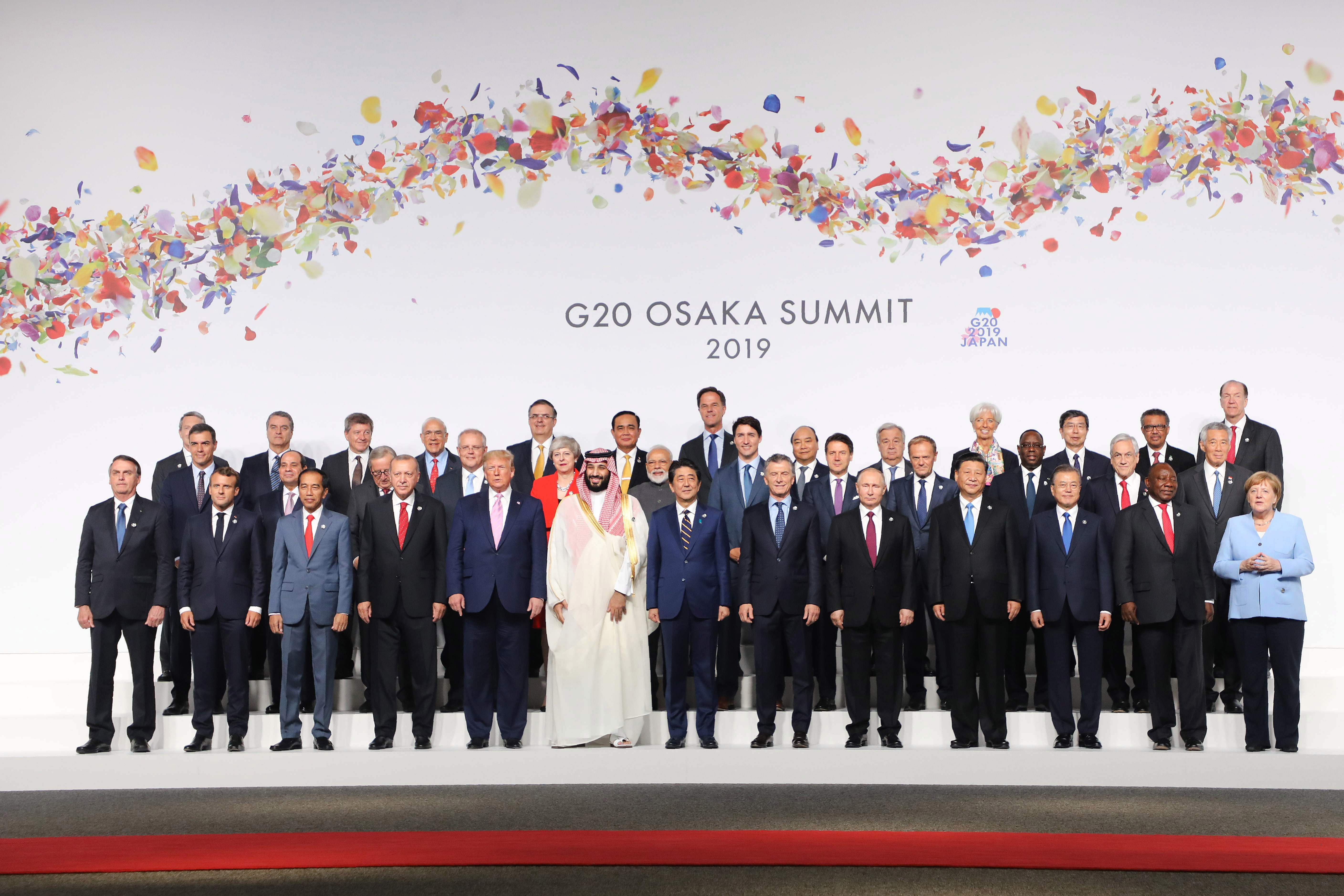
 Abdullah II.
Abdullah II.
 Alberto Ángel Fernández
Alberto Ángel Fernández
 Andrés Manuel López Obrador
Andrés Manuel López Obrador
 Angela Merkel
Angela Merkel
 Boris Johnson
Boris Johnson
 Charles Michel
Charles Michel
 Cyril Ramaphosa
Cyril Ramaphosa
 Donald Trump
Donald Trump
 Emmanuel Macron
Emmanuel Macron
 Giuseppe Conte
Giuseppe Conte

 Hand in Hand
Hand in Hand
 Jair Bolsonaro
Jair Bolsonaro
 Joko Widodo
Joko Widodo
 Justin Trudeau
Justin Trudeau
 Lee Hsien Loong
Lee Hsien Loong
 Moon Jae-in
Moon Jae-in
 Muhammad bin Raschid Al Maktum
Muhammad bin Raschid Al Maktum
 Narendra Modi
Narendra Modi

 Paul Kagame
Paul Kagame
 Pedro Sánchez
Pedro Sánchez
 Recep Tayyip Erdoğan
Recep Tayyip Erdoğan
 Salman ibn Abd al-Aziz
Salman ibn Abd al-Aziz
 Saudi Arabia
Saudi Arabia
 Scott Morrison
Scott Morrison
 Simonetta Sommaruga
Simonetta Sommaruga
 Ursula von der Leyen
Ursula von der Leyen
 Wladimir Wladimirowitsch Putin
Wladimir Wladimirowitsch Putin
 Xi Jingping
Xi Jingping
 Yoshihide Suga
Yoshihide Suga

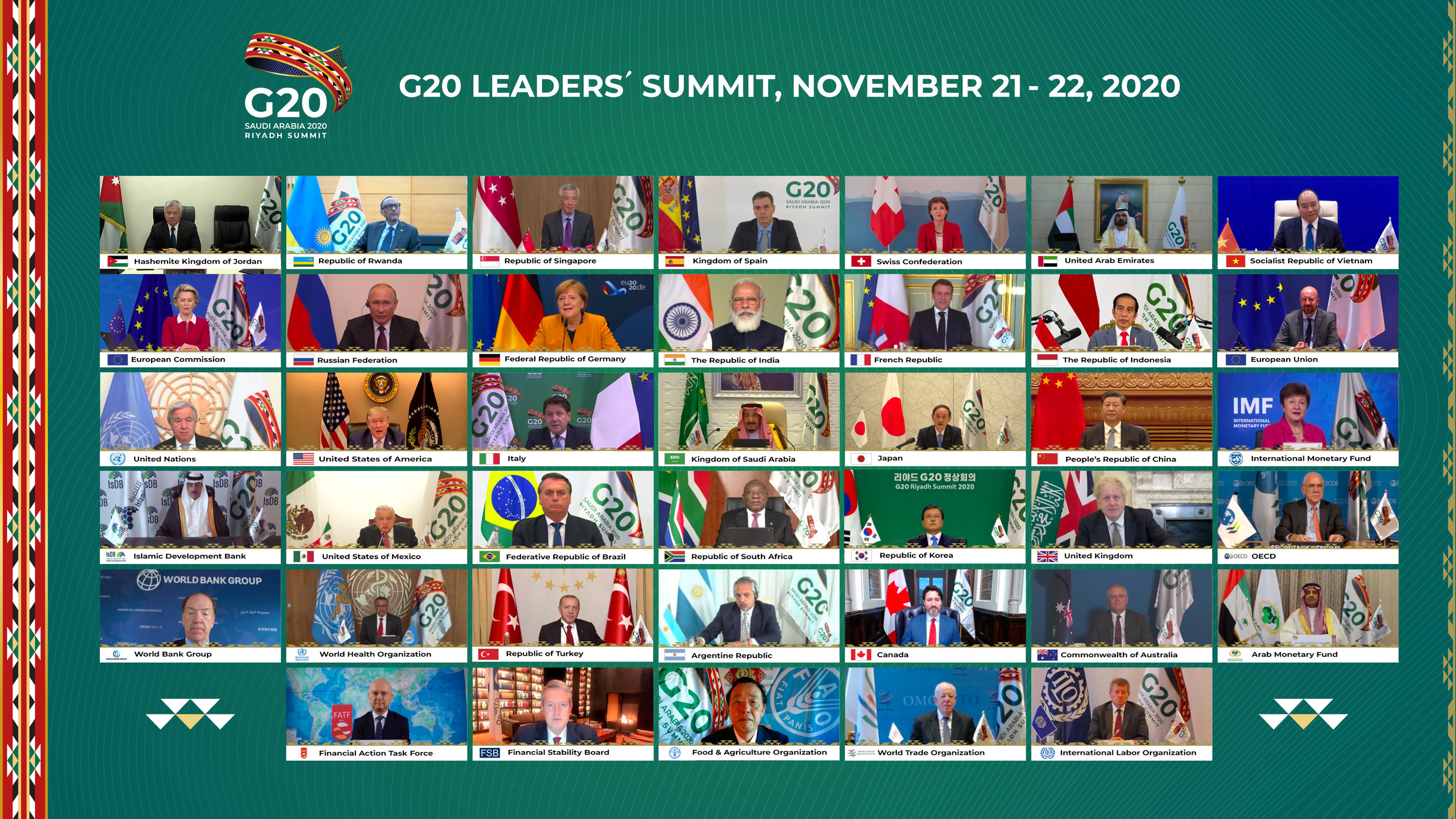

 Alberto Ángel Fernández
Alberto Ángel Fernández
 Andrés Manuel López Obrador
Andrés Manuel López Obrador
 Angela Merkel
Angela Merkel
 Boris Johnson
Boris Johnson
 Charles Michel
Charles Michel
 Cyril Ramaphosa
Cyril Ramaphosa
 Emmanuel Macron
Emmanuel Macron

 Fumio Kishida
Fumio Kishida


 Hand in Hand
Hand in Hand
 Hassanal Bolkiah
Hassanal Bolkiah
 Italy
Italy
 Jacinda Ardern
Jacinda Ardern
 Jair Bolsonaro
Jair Bolsonaro
 Joe Biden
Joe Biden
 Joko Widodo
Joko Widodo
 Justin Trudeau
Justin Trudeau

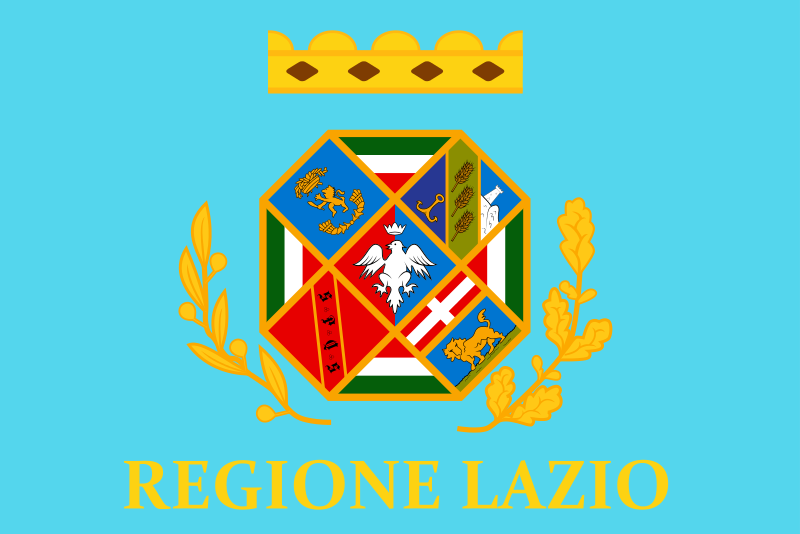 Lazio
Lazio
 Lee Hsien Loong
Lee Hsien Loong
 Mario Draghi
Mario Draghi
 Mark Rutte
Mark Rutte
 Moon Jae-in
Moon Jae-in
 Narendra Modi
Narendra Modi
 Paul Kagame
Paul Kagame
 Pedro Sánchez
Pedro Sánchez
 Recep Tayyip Erdoğan
Recep Tayyip Erdoğan
 Rodrigo Duterte
Rodrigo Duterte
 Salman ibn Abd al-Aziz
Salman ibn Abd al-Aziz
 Scott Morrison
Scott Morrison
 Ursula von der Leyen
Ursula von der Leyen
 Wladimir Wladimirowitsch Putin
Wladimir Wladimirowitsch Putin
 Xi Jingping
Xi Jingping


 Alberto Ángel Fernández
Alberto Ángel Fernández
 Anthony Albanese
Anthony Albanese
 António Guterres
António Guterres
 Charles Michel
Charles Michel
 Cyril Ramaphosa
Cyril Ramaphosa
 Emmanuel Macron
Emmanuel Macron
 Fumio Kishida
Fumio Kishida
 Giorgia Meloni
Giorgia Meloni

 Hand in Hand
Hand in Hand
 Indonesia
Indonesia
 Joe Biden
Joe Biden
 Joko Widodo
Joko Widodo
 Justin Trudeau
Justin Trudeau
 Lee Hsien Loong
Lee Hsien Loong
 Macky Sall
Macky Sall
 Mark Rutte
Mark Rutte
 Mohammad bin Salman bin Abdulaziz Al Saud
Mohammad bin Salman bin Abdulaziz Al Saud
 Mohamed bin Zayed Al Nahyan
Mohamed bin Zayed Al Nahyan
 Narendra Modi
Narendra Modi
 Olaf Scholz
Olaf Scholz
 Paul Kagame
Paul Kagame
 Pedro Sánchez
Pedro Sánchez
 Recep Tayyip Erdoğan
Recep Tayyip Erdoğan
 Rishi Sunak
Rishi Sunak
 Tedros Adhanom
Tedros Adhanom
 Ursula von der Leyen
Ursula von der Leyen
 Wolodymyr Selenskyj
Wolodymyr Selenskyj
 Xi Jingping
Xi Jingping
 Yoon Suk-yeol
Yoon Suk-yeol

 Abd al-Fattah as-Sisi
Abd al-Fattah as-Sisi
 Alberto Ángel Fernández
Alberto Ángel Fernández
 Andrés Manuel López Obrador
Andrés Manuel López Obrador
 Anthony Albanese
Anthony Albanese
 António Guterres
António Guterres
 Asian Development Bank,ADB
Asian Development Bank,ADB
 Asian Development Bank,ADB
Asian Development Bank,ADB
 Masatsugu Asakawa
Masatsugu Asakawa
 Azali Assoumani
Azali Assoumani
 Charles Michel
Charles Michel
 Cyril Ramaphosa
Cyril Ramaphosa
 Emmanuel Macron
Emmanuel Macron
 Fumio Kishida
Fumio Kishida
 Giorgia Meloni
Giorgia Meloni

 Hand in Hand
Hand in Hand
 Hasina Wajed
Hasina Wajed
 India
India
 Internationaler Währungsfonds
Internationaler Währungsfonds
 Internationaler Währungsfonds
Internationaler Währungsfonds
 Kristalina Georgiewa
Kristalina Georgiewa
 Joe Biden
Joe Biden
 Joko Widodo
Joko Widodo
 Justin Trudeau
Justin Trudeau
 Kristalina Georgiewa
Kristalina Georgiewa
 Lee Hsien Loong
Lee Hsien Loong
 Li Qiang
Li Qiang
 Luiz Inácio Lula da Silva
Luiz Inácio Lula da Silva
 Mark Rutte
Mark Rutte
 Mohammad bin Salman bin Abdulaziz Al Saud
Mohammad bin Salman bin Abdulaziz Al Saud
 Mohamed bin Zayed Al Nahyan
Mohamed bin Zayed Al Nahyan
 Narendra Modi
Narendra Modi
 National Capital Territory
National Capital Territory
 Olaf Scholz
Olaf Scholz
 Pedro Sánchez
Pedro Sánchez
 Recep Tayyip Erdoğan
Recep Tayyip Erdoğan
 Rishi Sunak
Rishi Sunak
 Tedros Adhanom
Tedros Adhanom
 Ursula von der Leyen
Ursula von der Leyen
 World Bank
World Bank
 World Bank
World Bank
 Ajay Banga
Ajay Banga
 World Trade Organization
World Trade Organization
 World Trade Organization
World Trade Organization
 Ngozi Okonjo-Iweala
Ngozi Okonjo-Iweala
 Yoon Suk-yeol
Yoon Suk-yeol

 Abd al-Fattah as-Sisi
Abd al-Fattah as-Sisi
 African Union
African Union
 African Union
African Union
 Mohamed Ould Ghazouani
Mohamed Ould Ghazouani
 African Development Bank
African Development Bank
 African Development Bank
African Development Bank
 Akinwumi Adesina
Akinwumi Adesina
 Anthony Albanese
Anthony Albanese
 António Guterres
António Guterres
 Anwar Ibrahim
Anwar Ibrahim
 Arab League
Arab League
 Arab League
Arab League
 Ahmed Aboul Gheit
Ahmed Aboul Gheit
 Brazil
Brazil
 Charles Michel
Charles Michel
 Claudia Sheinbaum
Claudia Sheinbaum
 Cyril Ramaphosa
Cyril Ramaphosa
 Emmanuel Macron
Emmanuel Macron
 Financial Stability Board,FSB
Financial Stability Board,FSB
 Financial Stability Board,FSB
Financial Stability Board,FSB
 Klaas Knot
Klaas Knot
 Food and Agriculture Organization,FAO
Food and Agriculture Organization,FAO
 Food and Agriculture Organization,FAO
Food and Agriculture Organization,FAO
 Qu Dongyu
Qu Dongyu
 Gabriel Boric
Gabriel Boric
 Giorgia Meloni
Giorgia Meloni

 Hand in Hand
Hand in Hand
 Inter-American Development Bank
Inter-American Development Bank
 Inter-American Development Bank
Inter-American Development Bank
 Ilan Goldfajn
Ilan Goldfajn
 International Labour Organization,ILO
International Labour Organization,ILO
 International Labour Organization,ILO
International Labour Organization,ILO
 Gilbert Houngbo
Gilbert Houngbo
 Internationaler Währungsfonds
Internationaler Währungsfonds
 Internationaler Währungsfonds
Internationaler Währungsfonds
 Kristalina Georgiewa
Kristalina Georgiewa
 Javier Milei
Javier Milei
 Joe Biden
Joe Biden
 Jonas Gahr Støre
Jonas Gahr Støre
 Justin Trudeau
Justin Trudeau
 Keir Starmer
Keir Starmer
 United Nations Conference on Trade and Development
United Nations Conference on Trade and Development
 United Nations Conference on Trade and Development
United Nations Conference on Trade and Development
 Rebeca Grynspan
Rebeca Grynspan
 Development Bank of Latin America and the Caribbean
Development Bank of Latin America and the Caribbean
 Development Bank of Latin America and the Caribbean
Development Bank of Latin America and the Caribbean
 Sergio Díaz-Granados Guida
Sergio Díaz-Granados Guida
 Lawrence Wong
Lawrence Wong
 Luis Arce
Luis Arce
 Luís Montenegro
Luís Montenegro
 Luiz Inácio Lula da Silva
Luiz Inácio Lula da Silva
 Narendra Modi
Narendra Modi
 New Development Bank
New Development Bank
 New Development Bank
New Development Bank
 Dilma Rousseff
Dilma Rousseff
 Olaf Scholz
Olaf Scholz
 Pedro Sánchez
Pedro Sánchez
 Phạm Minh Chính
Phạm Minh Chính
 Prabowo Subianto
Prabowo Subianto
 Recep Tayyip Erdoğan
Recep Tayyip Erdoğan
 Rio de Janeiro
Rio de Janeiro
 Shigeru Ishiba
Shigeru Ishiba
 UNESCO
UNESCO
 UNESCO
UNESCO
 Audrey Azoulay
Audrey Azoulay
 Ursula von der Leyen
Ursula von der Leyen
 World Bank
World Bank
 World Bank
World Bank
 Ajay Banga
Ajay Banga
 World Health Organization, WHO
World Health Organization, WHO
 World Health Organization, WHO
World Health Organization, WHO
 Tedros Adhanom
Tedros Adhanom
 World Trade Organization
World Trade Organization
 World Trade Organization
World Trade Organization
 Ngozi Okonjo-Iweala
Ngozi Okonjo-Iweala
 Xi Jingping
Xi Jingping
 Yoon Suk-yeol
Yoon Suk-yeol


With a fluid representation of the nations that are part of the G20 — through the diversity of member countries’ flag colors —, the Brazilian presidency’s logo highlights the dynamism and multilateralism with which Brasil approaches global issues.
In an organic and striking way, the logo presents global cooperation, the relationship of mutual respect, and the collaboration between the leaders of member countries. The resulting symbol is the stylized map of Brasil, the nation that now takes on the group's rotational presidency.
More than a motto, the slogan “Building a just world and a sustainable planet” expresses Brasil's commitment and desire to promote fair agreements that promote global economic and social development. It also highlights the Brazilian motto for this mandate: the reduction of hunger, poverty and inequality worldwide, as well as socio-environmental development that includes a fair and inclusive ecological transition.
The idea is to represent the commitment to a more equitable governance model — in which trade agreements can promote both economic prosperity and fuller social inclusion.
2024年G20里约热内卢峰会(葡萄牙语:Cúpula do G20 Rio de Janeiro 2024)是即将举行的二十国集团第十九次峰会,峰会定于2024年11月18日至19日巴西里约热内卢现代艺术博物馆举行。其主题是“建造公正的世界和永续发展的行星”(英语:"Building a Just World and a Sustainable Planet"、葡萄牙语:'Construindo um Mundo Justo e um Planeta Sustentável')。

 European Union
European Union

 European Union
European Union
 Acting heads of government in the European Union
Acting heads of government in the European Union
 Giorgia Meloni
Giorgia Meloni
 Partei Europäische Konservative und Reformer
Partei Europäische Konservative und Reformer

 Party and government
Party and government

 Party and government
Party and government
 Group of Seven,G7
Group of Seven,G7

 Party and government
Party and government
 Group of the twenty most important industrial and emerging countries
Group of the twenty most important industrial and emerging countries
 President or Chairman
President or Chairman
 President or Chairman
President or Chairman
 Italien
Italien





 Argentina
Argentina
 Australia
Australia
 Brazil
Brazil
 China
China
 Germany
Germany
 England
England

 European Union
European Union
 France
France

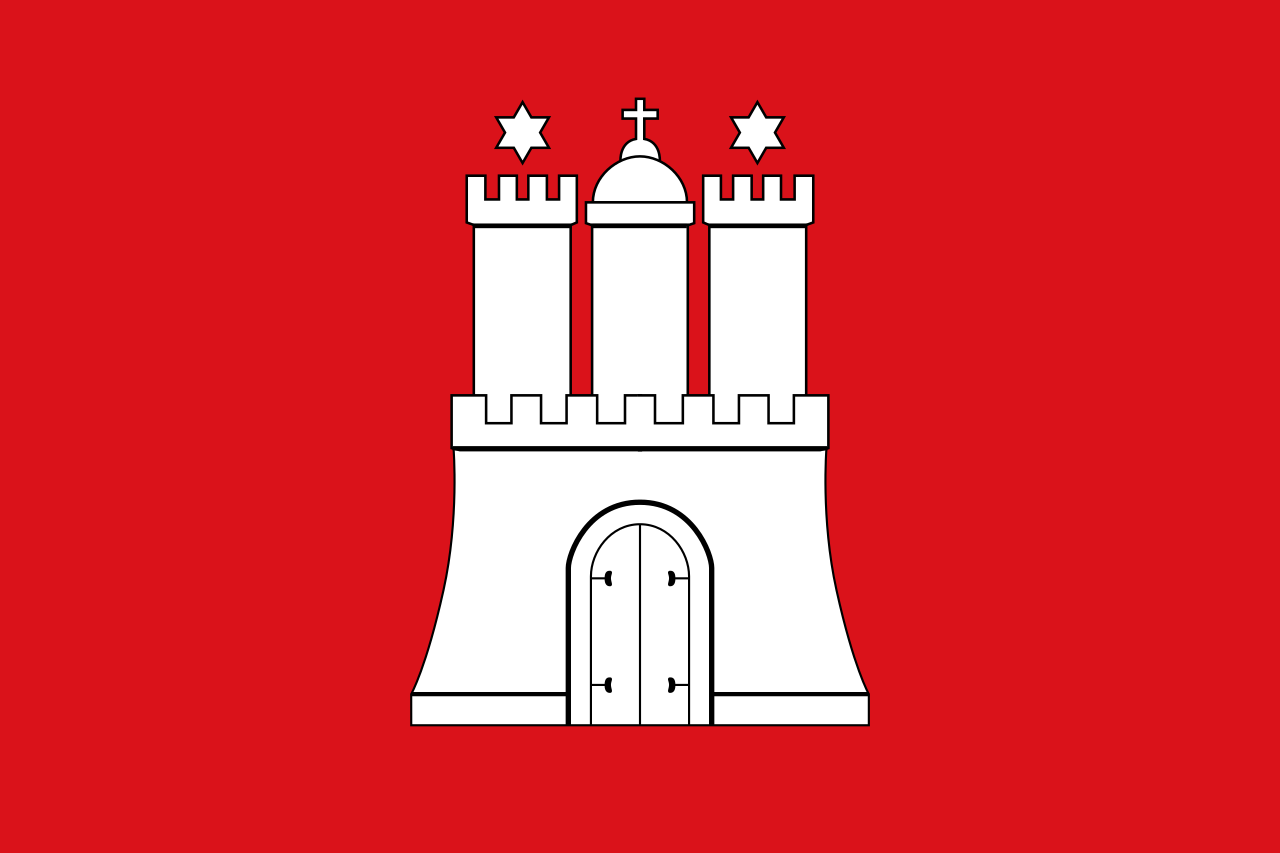 Hamburg
Hamburg

 Hand in Hand
Hand in Hand
 India
India
 Indonesia
Indonesia
 Italy
Italy
 Japan
Japan
 Canada
Canada
 Mexico
Mexico

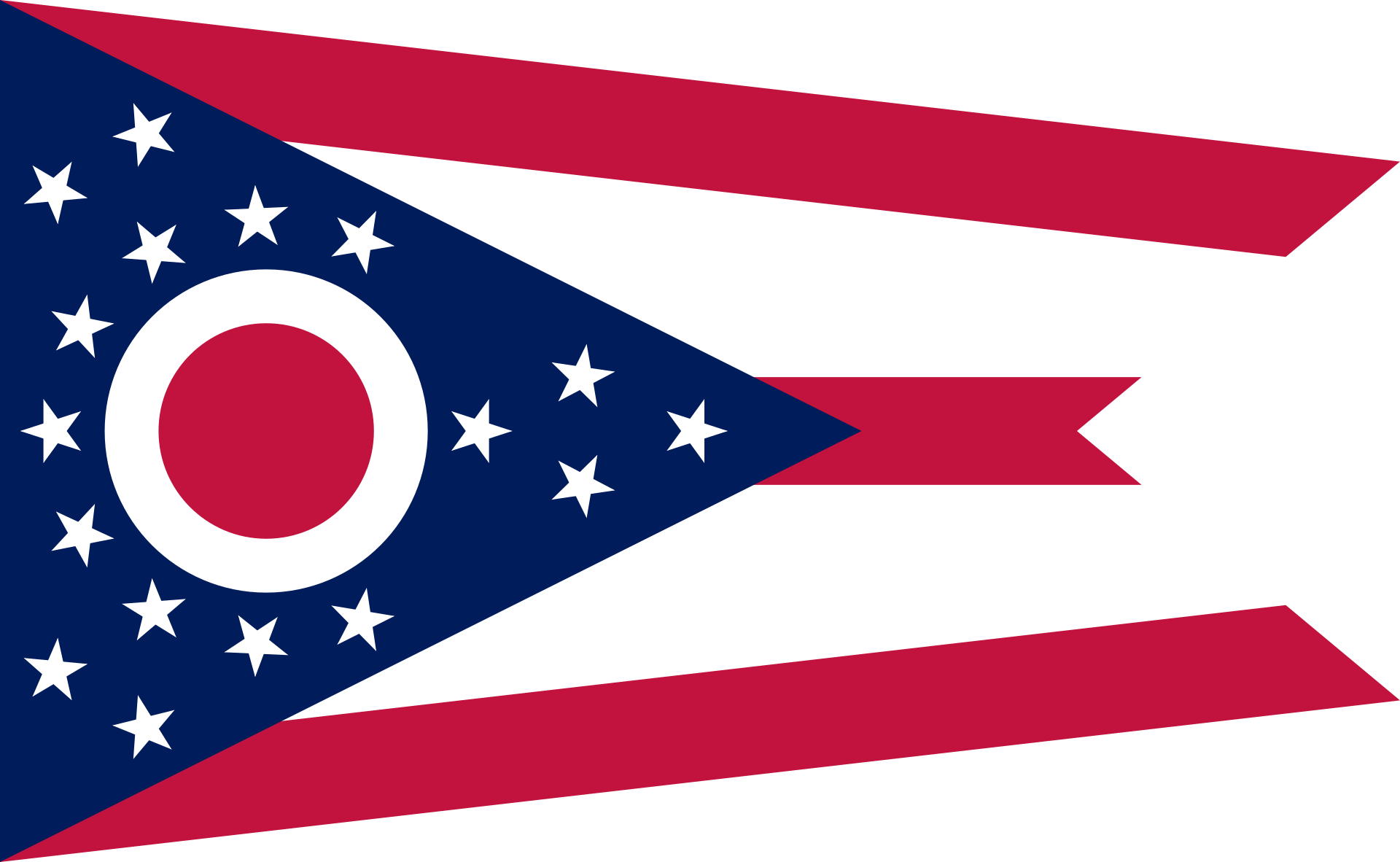 Ohio-OH
Ohio-OH

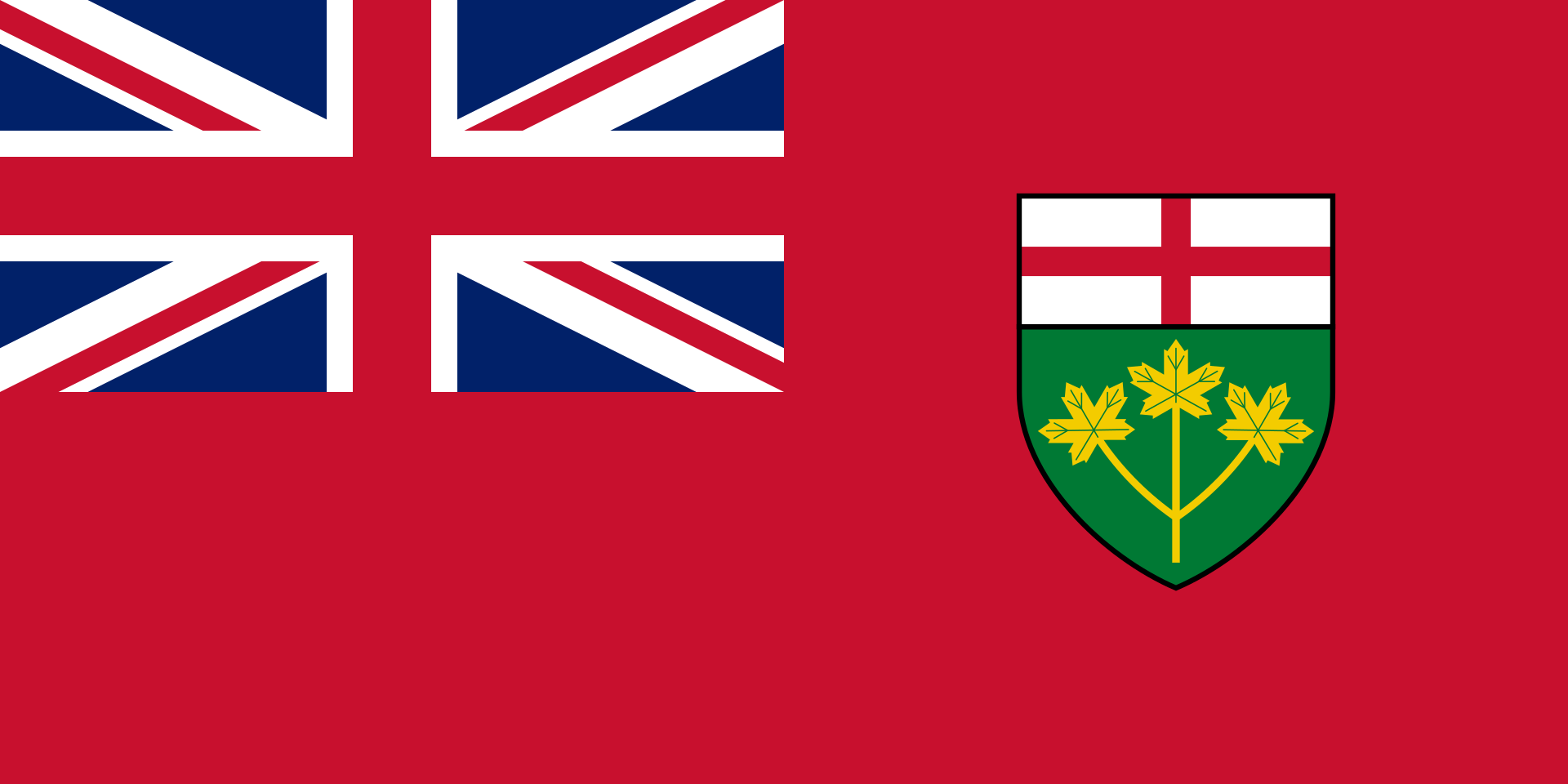 Ontario-ON
Ontario-ON

 Party and government
Party and government

 Party and government
Party and government
 Group of the twenty most important industrial and emerging countries
Group of the twenty most important industrial and emerging countries

 Provence-Alpes-Côte d´Azur
Provence-Alpes-Côte d´Azur

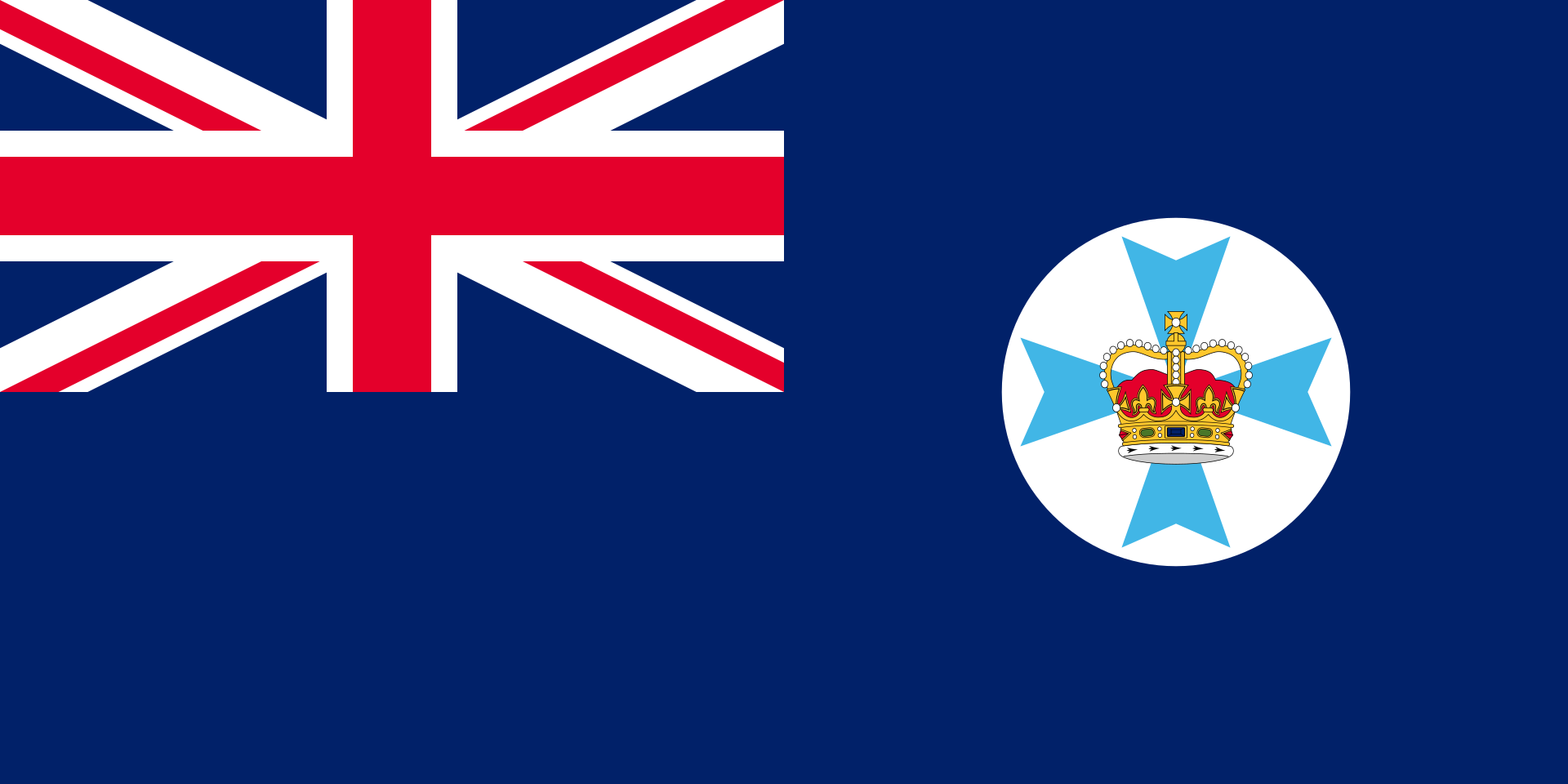 Queensland-QLD
Queensland-QLD
 Republic of Korea
Republic of Korea
 Russia
Russia
 Saudi Arabia
Saudi Arabia
 South Africa
South Africa
 Turkey
Turkey
 United States
United States
 United Kingdom
United Kingdom

 Washington, D.C.
Washington, D.C.
 Zhejiang Sheng-ZJ
Zhejiang Sheng-ZJ

20国集团(G20)是一个国际经济合作论坛,于1999年9月25日由八国集团的财长在华盛顿宣布成立,属于布雷顿森林体系框架内非正式对话的一种机制,由原八国集团以及其余十二个重要经济体组成。该组织的宗旨是为推动已工业化的发达国家和新兴市场国家之间就实质性问题进行开放及有建设性的讨论和研究,以寻求合作并促进国际金融稳定和经济的持续增长,按照以往惯例,国际货币基金组织与世界银行列席该组织的会议。20国集团成员涵盖面广,代表性强,该集团的GDP占全球经济的90%,贸易额占全球的80%,因此已取代G8成为全球经济合作的主要论坛。 二十国集团(英语:Group of Twenty,缩写:G20)是一个国际经济合作论坛,于1999年12月16日在德国柏林成立,属于布雷顿森林体系框架内对话的一种机制,由七国集团(加拿大、美国、英国、法国、德国、意大利、日本),金砖五国(巴西、俄罗斯、印度、中国、南非),七个重要经济体(墨西哥、阿根廷、土耳其、沙特阿拉伯、韩国、印度尼西亚、澳大利亚),以及欧洲联盟组成。按照惯例,国际货币基金组织与世界银行列席该组织的会议。
Die G20 (Abkürzung für Gruppe der zwanzig wichtigsten Industrie- und Schwellenländer) ist ein seit 1999 bestehender informeller Zusammenschluss aus 19 Staaten und der Europäischen Union. Sie soll als Forum für die Kooperation und Konsultation in Fragen des internationalen Finanzsystems dienen.
An den Treffen der G20 nehmen die Staats- und Regierungschefs der G20 Länder, die Finanzminister und Zentralbankchefs der G8 und elf weiterer Staaten, darunter die O-5, sowie die EU-Präsidentschaft (wenn diese zu diesem Zeitpunkt nicht von einem G8-Staat geführt wird), der Präsident der Europäischen Zentralbank, der Geschäftsführende Direktor (Managing Director) des Internationalen Währungsfonds, der Vorsitzende des Internationalen Währungs- und Finanzausschusses (IMFC), der Präsident der Weltbank und der Vorsitzende des Development Committees von Weltbank und Internationalem Währungsfonds teil.
G20(ジートゥエンティ)は、"Group of Twenty"の略で、主要国首脳会議(G7)に参加する7か国、EU、ロシア、および新興国11か国の計20か国・地域からなるグループである。
構成国・地域は、アメリカ合衆国、イギリス、フランス、ドイツ、日本、イタリア、カナダ、EU、ロシア、中華人民共和国、インド、ブラジル、メキシコ、南アフリカ共和国、オーストラリア、大韓民国、インドネシア、サウジアラビア、トルコ、アルゼンチンである。20か国・地域首脳会合(G20首脳会合)および20か国・地域財務大臣・中央銀行総裁会議(G20財務相・中央銀行総裁会議)を開催している。主要20か国・地域[1][2]とも言い、日本の放送局であるNHKでは、先進国会合であるG7と区別して、先進国に新興国を加えた主要20か国[3]と表現している。
The G20 (or Group of Twenty) is an international forum for the governments and central bank governors from 19 countries and the European Union (EU). Founded in 1999 with the aim to discuss policy pertaining to the promotion of international financial stability,[3] the G20 has expanded its agenda since 2008 and heads of government or heads of state, as well as finance ministers, foreign ministers and think tanks[4], have periodically conferred at summits ever since. It seeks to address issues that go beyond the responsibilities of any one organization.[3]
Membership of the G20 consists of 19 individual countries plus the European Union. The EU is represented by the European Commission and by the European Central Bank. Collectively, the G20 economies account for around 90%[5] of the gross world product (GWP), 80% of world trade (or, if excluding EU intra-trade, 75%), two-thirds of the world population,[2] and approximately half of the world land area.
With the G20 growing in stature[6] after its inaugural leaders' summit in 2008, its leaders announced on 25 September 2009 that the group would replace the G8 as the main economic council of wealthy nations.[7] Since its inception, the G20's membership policies have been criticized by some intellectuals,[8][9] and its summits have been a focus for major protests.[10][11]
The heads of the G20 nations held summits twice in 2009 and twice in 2010. Since the November 2011 Cannes summit, G20 summits have been held annually.[12]
Le Groupe des vingt (G20) est un groupe composé de dix-neuf pays et de l'Union européenne dont les ministres, les chefs des banques centrales et les chefs d'État se réunissent annuellement. Il a été créé en 1999, après la succession de crises financières dans les années 19901. Il vise à favoriser la concertation internationale, en intégrant le principe d'un dialogue élargi tenant compte du poids économique croissant pris par un certain nombre de pays. Le G20 représente 85 % du commerce mondial, les deux tiers de la population mondiale et plus de 90 % du produit mondial brut (somme des PIB de tous les pays du monde)1. Le 15 novembre 2008, pour la première fois de son histoire, les chefs d'État ou de gouvernement se sont réunis. Le G20 se décline sous trois formes : les G20 regroupant des chefs d'État et de gouvernement, les G20 finance regroupant les ministres des finances et les gouverneurs des banques centrales et, depuis les 20-21 avril 2010, des G20 sociaux, réunissant les ministres de l'emploi.
Il Gruppo dei 20 (o G20) è un forum dei leader, dei ministri delle finanze e dei governatori delle banche centrali, creato nel 1999, dopo una successione di crisi finanziarie per favorire l'internazionalità economica e la concertazione tenendo conto delle nuove economie in sviluppo. Di esso fanno parte i 19 paesi più industrializzati (quelli del G8 in primis) con l'eccezione di Spagna e Paesi Bassi (sono presenti invece Argentina e Sudafrica). È presente, inoltre, l'Unione europea.
Il G20 rappresenta i due terzi del commercio e della popolazione mondiale, oltre all'80% del PIL mondiale. Sono presenti anche alcune tra le maggiori organizzazioni internazionali.
El Grupo de los 20 (numerónimo: G-20) es un foro cuyos miembros permanentes son 19 países de todos los continentes (Alemania, Arabia Saudita, Argentina, Australia, Brasil, Canadá, China, Corea del Sur, Estados Unidos, Francia, India, Indonesia, Italia, Japón, México, Reino Unido, Rusia, Sudáfrica, Turquía y la Unión Europea).1
Es el principal espacio de deliberación política y económica del mundo.1 En conjunto las entidades políticas representadas en el G20 reúnen el 66 % de la población mundial y el 85 % del producto bruto mundial.1.
El G-20 cuenta además con 14 organizaciones internacionales socias, cuyas presidencias también integran el foro:2
- Mundiales (7): Naciones Unidas (ONU), Fondo Monetario Internacional (FMI), Banco Mundial, Consejo de Estabilidad Financiera (FSB), Organización Internacional del Trabajo (OIT), Organización Mundial de Comercio (OMC) y Organización Mundial de la Salud (OMS)
- Regionales (7): Asociación de Naciones del Sudeste Asiático (ASEAN), Unión Africana, Nueva Alianza para el Desarrollo de África (NEPAD), Comunidad del Caribe (CARICOM), Banco Interamericano de Desarrollo (BID), Banco de Desarrollo de América Latina (CAF) y Organización para la Cooperación y el Desarrollo Económico (OCDE)
El G-20 surgió en dos etapas. Primero en 1999, como un grupo de segundo nivel de autoridades económicas y financieras, y luego como un grupo de primer nivel en 2008, como consecuencia de la crisis mundial que estalló ese año, al constituirse como Cumbre de Jefes de Estado, desplazando al G-8 y al G8+5 como foro de discusión de la economía mundial.3
La instancia más importante del G20 es la Cumbre de Jefes de Estado, denominada Cumbre de Líderes, que se reúne una vez por año.4 El G20 cuenta con dos instancias gubernamentales de segundo nivel, denominadas canales de trabajo: el Canal de Finanzas que reúne a los ministros de Finanzas y presidentes de bancos centrales y el Canal de Sherpas, para tratar los temas no económicos.4
Complementariamente el G-20 cuenta con grupos de participación de la sociedad civil, llamados grupos de afinidad: Business 20 (B20) para empresarios, Civil 20 (C20) para ONGs, Labour 20 (L20) para sindicatos, Science 20 (S20) para científicos, Think 20 (T20) para institutos de investigación, Women 20 (W20) para organizaciones feministas y Youth 20 (Y20) para organizaciones juveniles.4
En 2019 la cumbre se realizó en Osaka Japón, correspondiendo la presidencia del grupo a su primer ministro, Shinzō Abe.
Больша́я двадца́тка (также G20, G-20 , Группа двадцати; официально — англ. The Group of Twenty, major advanced and emerging economies[1]) — клуб правительств и глав центральных банков государств с наиболее развитой и развивающейся экономикой[2].
В совокупности, G20 представляет 85 % мирового валового национального продукта, 75 % мировой торговли (включая торговлю внутри ЕС) и две трети населения мира[2].
Европейский союз представлен председателем Европейской комиссии и председателем Европейского совета[3]. Кроме того, обычно на встречах G20 присутствуют представители различных международных организаций, среди которых Совет по финансовой стабильности, Международный валютный фонд, Всемирная торговая организация, Африканский Союз, АСЕАН, Организация Объединённых Наций и Всемирный банк[2].
Группа 20 была создана в ответ на азиатский финансовый кризис конца 1990-х[2] и растущее сознание того, что страны с развивающейся рыночной экономикой не были адекватно представлены в мировых экономических обсуждениях и принятии решений. Переход от «большой семёрки» к формату G20 был ускорен из опасения катастрофы глобальной экономики в общемировой экономический кризис 2008 года[4]. До 2008 года группа не проводила саммитов на высшем уровне, её основной формой деятельности были ежегодные встречи на уровне министров финансов и глав центробанков. На сегодняшний день саммиты G20 являются глобальным форумом для сотрудничества и консультаций по вопросам, относящимся к международной финансово-экономической системе.

 European Union
European Union
 History of the European Union
History of the European Union

 European Union
European Union
 *Founding states
*Founding states

 Geography
Geography

 Geography
Geography
 ***IMF Developed countries
***IMF Developed countries
 Italy
Italy
 IMF Developed countries
IMF Developed countries
 IMF Developed countries
IMF Developed countries
 TOP3
TOP3

 Mitglieder der NATO
Mitglieder der NATO

 Party and government
Party and government
 Group of the twenty most important industrial and emerging countries
Group of the twenty most important industrial and emerging countries

 Party and government
Party and government
 Group of Seven,G7
Group of Seven,G7

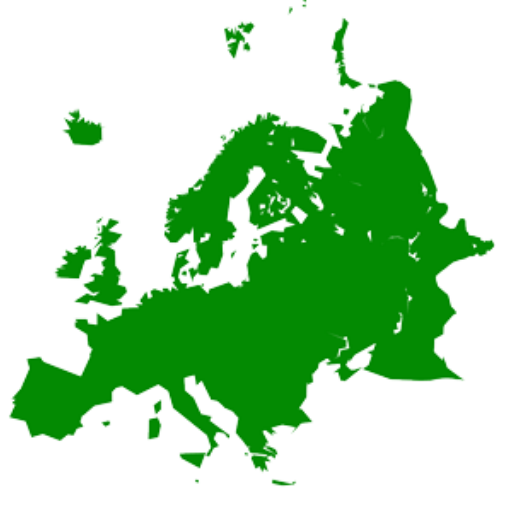 States of Europe
States of Europe

意大利共和国(意大利语:Repubblica Italiana[注 1]),通称意大利(Italia),是欧洲主权国家,主要由位于南欧的靴型意大利半岛及两个地中海岛屿西西里岛和撒丁岛所组成。意大利北方的阿尔派恩山地区与法国、瑞士、奥地利以及斯洛文尼亚接壤,其领土包围着两个微型国家——圣马力诺和梵蒂冈及一个主权实体 ——马耳他骑士团,而在瑞士拥有座落于卢加诺湖湖畔的意大利坎波内这个境外领土。全国行政上划分为20个区域(其中5个为自治区)、110个省与8,100个城市。首都为罗马,意大利王国在1870年将首都设置在此,而都灵(1861年-1865年)及佛罗伦萨(1865年-1870年)也曾是意大利王国的首都。根据2017年统计,意大利人口为6,059万,领土面积为301,338平方公里,人口密度约每平方公里201.1人,属于温带地中海型气候。意大利是欧洲人口第5多的国家,人口在世界上排名第23位。意大利因其拥有美丽的自然风光和为数众多的人类文化遗产而被称为美丽的国度(Belpaese)。
现今的意大利地区是以前欧洲民族及文化的摇篮,曾孕育出罗马文化及伊特拉斯坎文明,而意大利的首都罗马,几个世纪以来都是西方世界的政治中心,也曾经是罗马帝国的首都。当罗马帝国在西部的统治瓦解后,意大利遭受了多次外族入侵,包括伦巴第人、东哥德人等日耳曼民族,之后还有诺曼人等。拜占庭帝国曾一度重新占领意大利地区。在14世纪后,意大利转而成为文艺复兴的发源地[7],而文艺复兴对欧洲影响深远,让欧洲思想前进了一大步。意大利过去分裂为许多王国与城邦,但最终在1871年成为统一的意大利王国(除了圣马力诺)[8]。意大利殖民帝国巅峰是在1942年第二次世界大战时期,首相墨索里尼统治下的意大利王国变成一个地中海帝国,把势力范围延伸到北非(利比亚 、突尼斯)、东非(厄立特里亚、索马里兰、埃塞俄比亚)、巴尔干(阿尔巴尼亚、达尔马提亚、黑山、克罗地亚独立国西部、希腊、罗得岛与十二群岛)和法国南部(隆河以东的领土、科西嘉岛、摩纳哥),而且拥有中国天津的租界[9]。1945年,墨索里尼建立的意大利社会共和国被盟军击垮,意大利在二战后,废除了君主制,意大利王国灭亡,建立了现在的意大利共和国。战后根据1947年巴黎和平条约,意大利殖民帝国终结。
意大利也在政治、文化、科学、医疗卫生、教育、体育、艺术、时尚、宗教、料理、电影、建筑、经济及音乐等方面具有重要的影响力。米兰是意大利的经济及工业中心,根据2009年全球语言监察组织(Global Language Monitor)的资料[10],它也是世界时尚之都。在2007年造访意大利的游客人数位居世界第5位,总共超过4,370万人次的国际游客造访[11],而罗马则是欧盟国家中第3多游客造访的城市[12],也被认为世界上最美丽的十大古城之一[13]。威尼斯则被认为是世界上最美丽的城市,《纽约时报》形容它“无疑是世界上最美丽的人造城市”[14]。
意大利共和国是一个议会制民主共和国,是一个发达国家,世界七大工业国之一,最佳出生地指数则在世界排名第8名[15]。意大利在2017年人类发展指数列表中则名列第28位[16],并拥有高度人均国内生产总额[17][18]。根据国内生产总额与购买力平价国内生产总值的数据,意大利分别是世界第8大与第10大经济体[19]。意大利的政府预算金额则是位居世界第5位[20]。意大利是北大西洋公约和欧盟的创始会员国,也是七大工业国集团、20国集团和成员之一。意大利也参与经济合作暨发展组织、世界贸易组织、欧洲议会、西欧联盟及欧洲创新中心(Central European Initiative)。意大利也参加申根协议,也是世界世界国防预算金额第9高的国家且分享北约的核武器。
意大利在欧洲及全球的军事、文化和外交事务扮演重要的角色,首都罗马则是世界上对于政治及文化具有重要影响力的城市,世界上许多著名的机构,例如国际农业发展基金会(International Fund for Agricultural Development)[21]、全球在地论坛(Glocal Forum)[22]、世界粮食计划署及联合国粮食及农业组织的总部都设在罗马。意大利也拥有较高的教育指数、劳动力人口[23]及慈善捐助金额[24]。人均预期寿命排名世界第11位[25]。医疗保健系统在2000年被世界卫生组织评比为世界第2。意大利也是一个全球化的国家[26]。意大利的国家品牌价值在2009年名列世界第6位[27]。意大利在艺术、科学和技术上拥有悠久的传统,且至2017年共有53处世界遗产,是拥有最多世界遗产的西方国家[28][29]。
Italien (italienisch Italia [iˈtaːlja], amtlich Italienische Republik, italienisch Repubblica Italiana [reˈpubblika itaˈljaːna]) ist ein Staat in Südeuropa; seine Hauptstadt ist Rom.
Das italienische Staatsgebiet liegt zum größten Teil auf der vom Mittelmeer umschlossenen Apenninhalbinsel und der Po-Ebene sowie im südlichen Gebirgsteil der Alpen. Der Staat grenzt an Frankreich, die Schweiz, Österreich und Slowenien. Die Kleinstaaten Vatikanstadt und San Marino sind vollständig vom italienischen Staatsgebiet umschlossen. Neben den großen Inseln Sizilien und Sardinien sind mehrere Inselgruppen vorgelagert.
Als Kreuzweg der Zivilisationen des Mittelmeerraumes ist der italienische Beitrag zum kulturellen und historischen Erbe Europas und der Welt beachtenswert, das Gebiet des heutigen Italien war in der Antike die Kernregion des Römischen Reiches, die oberitalienische Toskana war das Kernland der Renaissance, ihr folgte von Rom ausgehend die Epoche des Barock.
Mit dem Risorgimento entstand der moderne italienische Nationalstaat: Von 1861 bis 1946 bestand unter dem Haus Savoyen das Königreich Italien, das rapide industrialisiert wurde, zu einer europäischen Großmacht aufstieg und ab den 1880er Jahren ein Kolonialreich in Nord- und Ostafrika errichtete. Die kostspielige und verlustreiche Teilnahme am Ersten Weltkrieg von 1915 bis 1918 führte zwar zur Vergrößerung des Staatsgebietes, aber auch zu schweren sozialen Unruhen und ebnete den italienischen Faschisten unter Benito Mussolini den Weg zur Macht. Das faschistische Regime herrschte von 1922 bis 1943/45 über Italien und führte das Land 1940 auf der Seite der Achsenmächte in den Zweiten Weltkrieg. Die Kriegsniederlage führte zum Verlust der Kolonien und zu vergleichsweise geringfügigen Gebietsabtretungen an den Nachbarstaat Jugoslawien. Im Juni 1946 beendete eine Volksabstimmung die Monarchie; die heutige Republik wurde ausgerufen.
Italien ist Mitinitiator der Europäischen Integration und Gründungsmitglied der Europäischen Union, des Europarates und der Lateinischen Union. Das Land ist Mitglied der G7, der G20, der NATO, der Vereinten Nationen (UNO), der Organisation für wirtschaftliche Zusammenarbeit und Entwicklung (OECD) und der Welthandelsorganisation (WTO).
Italien zählt laut Index der menschlichen Entwicklung als Industriestaat zu den höchstentwickelten Ländern der Erde[4] und ist gemessen am nominalen Bruttoinlandsprodukt die achtgrößte Volkswirtschaft der Welt.[5] Das Land genießt einen hohen Lebensstandard sowie Bildungsgrad und besitzt eine der höchsten Lebenserwartungen.[6] Italien ist das Land mit den meisten Welterbestätten der UNESCO (58)[7] und mit rund 65 Millionen Touristen jährlich eines der meistbesuchten Länder der Welt.[8]
イタリア共和国(イタリアきょうわこく、イタリア語: Repubblica Italiana)、通称イタリア(イタリア語: Italia、IPA: [iˈtaːlja] (![]() 音声ファイル) イターリャ)は、南ヨーロッパに位置する共和制国家。首都はローマ。 北をスイスとオーストリア、西がフランス、 東はスロベニアと国境を接している。南は地中海が位置しており、アルバニア、アルジェリア、クロアチア、ギリシャ、リビア、マルタ、モンテネグロ、スペイン、チュニジアと海上境界線を共有している。また、国土には独立国として小規模であるバチカンとサンマリノが存在している。
音声ファイル) イターリャ)は、南ヨーロッパに位置する共和制国家。首都はローマ。 北をスイスとオーストリア、西がフランス、 東はスロベニアと国境を接している。南は地中海が位置しており、アルバニア、アルジェリア、クロアチア、ギリシャ、リビア、マルタ、モンテネグロ、スペイン、チュニジアと海上境界線を共有している。また、国土には独立国として小規模であるバチカンとサンマリノが存在している。
イタリアはヨーロッパにおける古代文化の発祥地の一つとして知られ、同時に世界的な文化大国の一国に数えられている。文化・学問・宗教で歴史的に影響力を発揮しており、バチカン市国を首都ローマの領域内に事実上保護し、レオナルド・ダ・ヴィンチやガリレオ、ミケランジェロ、コロンブス、マキャヴェリといった偉人たちの故国でもある。かつてのローマ帝国の中枢となる地域であり、またルネサンスやリソルジメントなどの幾つかの世界史的事象の主要な舞台となった。
また、高い人間開発指数を持つイタリアは文化・経済ともに先進国であり[1]、名目GDPでは世界第8位かつ購買力平価では世界第12位、ユーロ圏ではドイツとフランスに次ぐ第3位の経済規模を持つ経済大国である[2]。
国際連合、北大西洋条約機構、G7、G20、OECD、欧州評議会、地中海連合、パリクラブの一員であり、ヨーロッパにおける四大国「ビッグ4」や、文化的・経済的・政治的に大きな影響を及ぼす列強の一角に数えられる[3][4]。また、コンセンサス連合の参加国であると同時に主導国である。軍事面では、世界第8位の軍事力を有している[5]。
総面積は30万1,338km2で、ロ・スティヴァレ(lo Stivale)と称される地中海に突き出たブーツ状のイタリア半島を中心に、地中海に浮かぶシチリア島とサルディーニャ島を主要な領土としており、いくつかの小島も領有している。北部にはアルプス山脈が、半島に沿ってアペニン山脈が走っており、平野はその間にあるポー平原などに限られ、国土の40%が山岳地帯である[6]。気候は各地ともに温暖で、北部を除き国土の大部分は温帯の地中海性気候に属し、これは農業と歴史に大きな影響を与えてきた[7]。西に港へ適したリグリア海、東には大陸棚が海の幸を豊富にもたらすアドリア海、南東部にはバルカン半島へと繋がるイオニア海があり、地理的に恵まれている。南にはティレニア海があり周辺にはストロンボリ火山やヴェスヴィオ山、エトナ山などの火山が集まっていて、世界有数の地震地帯である[6]。
Italy (Italian: Italia [iˈtaːlja] (![]() listen)), officially the Italian Republic (Italian: Repubblica Italiana [reˈpubblika itaˈljaːna]),[13][14] is a country consisting of a peninsula delimited by the Alps and several islands surrounding it,[15] whose territory largely coincides with the homonymous geographical region.[16] Italy is located in the centre of the Mediterranean Sea, in Southern Europe,[17][18][19] and is also considered part of Western Europe.[20][21] A unitary parliamentary republic with Rome as its capital and largest city, the country covers a total area of 301,340 km2 (116,350 sq mi) and shares land borders with France, Switzerland, Austria, Slovenia, and the enclaved microstates of Vatican City and San Marino. Italy has a territorial exclave in Switzerland (Campione) and a maritime exclave in Tunisian waters (Lampedusa). With around 60 million inhabitants, Italy is the third-most populous member state of the European Union.
listen)), officially the Italian Republic (Italian: Repubblica Italiana [reˈpubblika itaˈljaːna]),[13][14] is a country consisting of a peninsula delimited by the Alps and several islands surrounding it,[15] whose territory largely coincides with the homonymous geographical region.[16] Italy is located in the centre of the Mediterranean Sea, in Southern Europe,[17][18][19] and is also considered part of Western Europe.[20][21] A unitary parliamentary republic with Rome as its capital and largest city, the country covers a total area of 301,340 km2 (116,350 sq mi) and shares land borders with France, Switzerland, Austria, Slovenia, and the enclaved microstates of Vatican City and San Marino. Italy has a territorial exclave in Switzerland (Campione) and a maritime exclave in Tunisian waters (Lampedusa). With around 60 million inhabitants, Italy is the third-most populous member state of the European Union.
Due to its central geographic location in Southern Europe and the Mediterranean, Italy has historically been home to myriad peoples and cultures. In addition to the various ancient peoples dispersed throughout what is now modern-day Italy, the most predominant being the Indo-European Italic peoples who gave the peninsula its name, beginning from the classical era, Phoenicians and Carthaginians founded colonies mostly in insular Italy,[22] Greeks established settlements in the so-called Magna Graecia of Southern Italy, while Etruscans and Celts inhabited central and northern Italy respectively. An Italic tribe known as the Latins formed the Roman Kingdom in the 8th century BC, which eventually became a republic with a government of the Senate and the People. The Roman Republic initially conquered and assimilated its neighbours on the Italian peninsula, eventually expanding and conquering parts of Europe, North Africa and Asia. By the first century BC, the Roman Empire emerged as the dominant power in the Mediterranean Basin and became a leading cultural, political and religious centre, inaugurating the Pax Romana, a period of more than 200 years during which Italy's law, technology, economy, art, and literature developed.[23][24]
During the Early Middle Ages, Italy endured the fall of the Western Roman Empire and barbarian invasions, but by the 11th century numerous rival city-states and maritime republics, mainly in the northern and central regions of Italy, became prosperous through trade, commerce, and banking, laying the groundwork for modern capitalism.[25] These mostly independent statelets served as Europe's main trading hubs with Asia and the Near East, often enjoying a greater degree of democracy than the larger feudal monarchies that were consolidating throughout Europe; however, part of central Italy was under the control of the theocratic Papal States, while Southern Italy remained largely feudal until the 19th century, partially as a result of a succession of Byzantine, Arab, Norman, Angevin, Aragonese, and other foreign conquests of the region.[26] The Renaissance began in Italy and spread to the rest of Europe, bringing a renewed interest in humanism, science, exploration, and art. Italian culture flourished, producing famous scholars, artists, and polymaths. During the Middle Ages, Italian explorers discovered new routes to the Far East and the New World, helping to usher in the European Age of Discovery. Nevertheless, Italy's commercial and political power significantly waned with the opening of trade routes that bypassed the Mediterranean.[27] Centuries of foreign meddling and conquest, and the rivalry and infighting between the Italian city-states, such as the Italian Wars of the 15th and 16th centuries, left Italy politically fragmented, and it was further conquered and divided among multiple foreign European powers over the centuries.
By the mid-19th century, rising Italian nationalism and calls for independence from foreign control led to a period of revolutionary political upheaval. After centuries of foreign domination and political division, Italy was almost entirely unified in 1861 following a war of independence, establishing the Kingdom of Italy.[28] From the late 19th century to the early 20th century, Italy rapidly industrialised, mainly in the north, and acquired a colonial empire,[29] while the south remained largely impoverished and excluded from industrialisation, fuelling a large and influential diaspora.[30] Despite being one of the victorious allied powers in World War I, Italy entered a period of economic crisis and social turmoil, leading to the rise of the Italian fascist dictatorship in 1922. Participation in World War II on the Axis side ended in military defeat, economic destruction, and the Italian Civil War. Following the rise of the Italian Resistance and the liberation of Italy, the country abolished its monarchy, established a democratic Republic, enjoyed a prolonged economic boom, and became a highly developed country.[31]
L'Italie (/itali/11 Écouter ; en italien : Italia /iˈtaːlja/12 Écouter), en forme longue la République italienne (en italien : Repubblica Italiana /reˈpubblika itaˈljaːna/12 Écouter), est un pays d'Europe du Sud correspondant physiquement à une partie continentale, une péninsule située au centre de la mer Méditerranée et une partie insulaire constituée par les deux plus grandes îles de cette mer, la Sicile et la Sardaigne, et beaucoup d'autres îles plus petites (hormis la Corse, française depuis 1768). Elle est rattachée au reste du continent par le massif des Alpes. Le territoire italien correspond approximativement à la région géographique homonyme.
L'Italie apporte une contribution très importante à la civilisation occidentale : elle est notamment le berceau de la civilisation étrusque, de la Grande-Grèce, de l'Empire romain, du Saint-Siège, des républiques maritimes, de l'humanisme et de la Renaissance. Existant en tant qu'État unitaire depuis 1861 à la suite du Risorgimento (Renaissance ou Résurrection) mené par le royaume de Sardaigne, l'Italie est une république depuis l'abolition par référendum de la monarchie italienne en 1946. Elle est membre fondateur de l'Union européenne et de la zone euro.
L'Italie est, en ce début de XXIe siècle, une puissance moyenne13, forte de ses soixante millions d'habitants, de sa position en 2017 de huitième puissance économique mondiale et de troisième économie de la Zone Euro, et de son rôle au sein de nombreuses organisations internationales comme l'Union européenne, l'Organisation du traité de l'Atlantique nord, le G7 et l'Organisation de coopération et de développement économiques.
L'Italia (/iˈtalja/,[8] ), ufficialmente Repubblica Italiana,[9] è uno Stato situato nell'Europa centro-meridionale, il cui territorio coincide in gran parte con l'omonima regione geografica. L'Italia è una repubblica parlamentare unitaria e conta una popolazione di circa 59,3 milioni di abitanti, che ne fanno il terzo Stato dell'Unione europea per numero di abitanti. La capitale è Roma.
La parte continentale, delimitata dall'arco alpino, confina a nord, da ovest a est, con Francia, Svizzera, Austria e Slovenia; il resto del territorio, circondato dai mari Ligure, Tirreno, Ionio e Adriatico, si protende nel mar Mediterraneo, occupando la penisola italiana e numerose isole (le maggiori sono Sicilia e Sardegna), per un totale di 302068,26 km².[10] Gli Stati della Città del Vaticano e di San Marino sono enclavi della Repubblica, mentre Campione d'Italia è un'exclave italiana.
Crocevia di numerose culture preistoriche, l'Italia antica fu unificata dalla civiltà romana diventando il centro amministrativo, economico, culturale e politico dell'Impero romano. Dopo la caduta dell'Impero romano d'Occidente, l'Italia medievale fu soggetta a invasioni e dominazioni di popolazioni barbariche, perdendo la propria unità politica. Tra XV secolo e XVI secolo, con la diffusione dell'umanesimo e del Rinascimento, divenne nuovamente il centro culturale del mondo occidentale e anche il campo di battaglia delle maggiori potenze europee durante le guerre d'Italia. La penisola conobbe poi la controriforma, il barocco, e il neoclassicismo.
Dopo la parentesi napoleonica, gli italiani lottarono per l'unificazione e l'indipendenza nazionale durante il Risorgimento, finché, dopo la seconda guerra d'indipendenza e la spedizione dei Mille, nel 1861 nacque il Regno d'Italia, che ottenne la vittoria nella prima guerra mondiale (1918), completando il processo di unificazione nazionale. Nel 1946, dopo il ventennio fascista (1922-1943), la sconfitta nella seconda guerra mondiale, e la definitiva guerra di liberazione, a seguito di un referendum istituzionale, lo Stato italiano divenne una repubblica.
Nel 2020 l'Italia, ottava potenza economica mondiale e terza nell'Unione europea, è un paese con un alto livello di vita: l'indice di sviluppo umano è molto alto, 0.883, e la speranza di vita è di 83,4 anni.[11] È membro fondatore dell'Unione europea, della NATO, del Consiglio d'Europa e dell'OCSE; aderisce all'ONU e alla Convenzione di Schengen. L'Italia è inoltre membro del G7 e del G20, partecipa al progetto di condivisione nucleare della NATO, si colloca in nona posizione nel mondo per spesa militare, ed è sia una potenza regionale che una grande potenza globale.[12][13] È il quarto paese più visitato del mondo e vanta il maggior numero di siti dichiarati patrimonio dell'umanità dall'UNESCO (58).[14]
Italia (en italiano, Italia, pronunciado /i'talja/ (![]() escuchar)), oficialmente la República Italiana (en italiano, Repubblica Italiana pronunciado /re'pub:lika ita'ljana/), es un país soberano transcontinental, miembro y fundador de la Unión Europea, constituido en una república parlamentaria compuesta por veinte regiones, formadas estas, a su vez, por 110 provincias.8
escuchar)), oficialmente la República Italiana (en italiano, Repubblica Italiana pronunciado /re'pub:lika ita'ljana/), es un país soberano transcontinental, miembro y fundador de la Unión Europea, constituido en una república parlamentaria compuesta por veinte regiones, formadas estas, a su vez, por 110 provincias.8
Italia se ubica en el centro del mar Mediterráneo, en Europa meridional. Ocupa la península itálica, así como la llanura Padana, la islas de Sicilia y Cerdeña y alrededor de ochocientas islas menores, entre las que se destacan las islas Tremiti en el mar Adriático, los archipiélagos Campano y Toscano en el mar Tirreno, o las islas Pelagias en África septentrional, entre otras. En el norte, está rodeada por los Alpes y tiene frontera con Francia, Suiza, Austria y Eslovenia. Los micro-Estados de San Marino y Ciudad del Vaticano son enclaves dentro del territorio italiano. A su vez, Campione d'Italia, es un municipio que forma un pequeño exclave italiano en territorio suizo.9
Debido a su localización central en el Mar Mediterráneo, Italia recibió, durante la Antigüedad,1011 diversas influencias de civilizaciones mediterráneas exteriores, como la de los fenicios y cartagineses en sus islas mayores1213 y de los antiguos griegos en la llamada Magna Grecia,1415 así como también fue el hogar de muchas culturas propias distintas, como la civilización nurágica, los etruscos y los latinos, siendo estos últimos quienes dieron vida a la civilización romana,1617 y asistió al nacimiento de la República y del posterior Imperio romano.1819 Tras la caída del Imperio romano de Occidente, bizantinos, lombardos y musulmanes se disputaron el control sobre el territorio itálico,2021 quebrando así su anterior unidad política.2223 A partir de la Plena Edad Media, Italia fue la cuna de repúblicas marítimas como Venecia, Génova, Pisa y Amalfi, de los Estados Pontificios y también del humanismo, del Renacimiento y del movimiento barroco, entre otros Estados y movimientos culturales.2425 En el curso del siglo XIX, mediante el proceso histórico conocido como Risorgimento, los varios territorios italianos lograron unificarse bajo un mismo Estado: el Reino de Italia.2627
La capital de Italia, Roma, ha sido durante siglos el centro político y cultural de la civilización occidental. Además, es la ciudad santa para la Iglesia católica, siendo el papa el obispo de Roma y encontrándose dentro de la ciudad el micro-Estado del Vaticano. El significado cultural del país se refleja en todos sus Patrimonios de la Humanidad, ya que tiene 58,28 el país con mayor número del mundo.29
Es el tercer país de Europa que más turistas recibe por año,30 siendo Roma la tercera ciudad más visitada del continente.31 Otras ciudades importantes son: Milán, centro de finanzas y de industria, y, según el Global Language Monitor, la capital de la Moda;32 Nápoles, importante puerto en el Mediterráneo, capital histórica y ciudad más poblada del Mezzogiorno;33 Turín, centro de industria automovilística y de diseño industrial. Italia es una república democrática, forma parte del G7 o grupo de las siete más grandes naciones avanzadas del mundo y es un país desarrollado con una calidad de vida muy alta,34 encontrándose en 2005 entre las siete primeras del mundo.35
Es el país número 28 (informe 2017) en materia de alto índice de desarrollo humano.36 Es una potencia regional y mundial,37383940 miembro fundador de la Unión Europea, firmante del Tratado de Roma en 1957. También es miembro fundador de la Organización del Tratado del Atlántico Norte (OTAN) y miembro del OTAN Quint, de la Organización para la Cooperación y el Desarrollo Económico, de la Organización Mundial del Comercio, del Consejo de Europa, del G-4, del G-12 y del G20. El país, y especialmente su capital, tiene una fuerte repercusión en temas de política y cultura, en organizaciones mundiales como la Organización para la Agricultura y la Alimentación (FAO),41 el Fondo Internacional de Desarrollo Agrícola (IFAD), el Glocal Forum42 o el Programa Mundial de Alimentos (WFP).
Ита́лия (итал. Italia [iˈtaːlja]), официальное название — Италья́нская Респу́блика (итал. Repubblica Italiana [reˈpubːlika itaˈljaːna]) — государство в Южной Европе, в центре Средиземноморья. Входит в Европейский союз и НАТО с момента их создания, является третьей по величине экономикой еврозоны.
Граничит с Францией на северо-западе (протяжённость границы — 488 км), Швейцарией (740 км) и Австрией (430 км) — на севере, Словенией — на северо-востоке (232 км).
Внутри территории Италии находятся два государства-анклава: государство Сан-Марино и расположенное внутри территории Рима ассоциированное с Италией государство Ватикан, с каждым из которых Италия имеет внутреннюю границу протяжённостью соответственно 39 км и 3,2 км.
Занимает Апеннинский полуостров, крайний северо-запад Балканского полуострова, Паданскую равнину, южные склоны Альп, острова Сицилия, Сардиния и ряд мелких островов[7].
На территории Италии находится 55 памятников всемирного наследия ЮНЕСКО — Италия разделяет с Китаем первое место по их количеству.

 History
History
 N 2000 - 2100 AD
N 2000 - 2100 AD

 History
History
 M 1500 - 2000 AD
M 1500 - 2000 AD

 History
History
 IMF Developed countries
IMF Developed countries
 IMF Developed countries
IMF Developed countries
 TOP2
TOP2
 Japan
Japan

 Party and government
Party and government
 Group of the twenty most important industrial and emerging countries
Group of the twenty most important industrial and emerging countries

 Party and government
Party and government
 Group of Seven,G7
Group of Seven,G7
 Silk road
Silk road

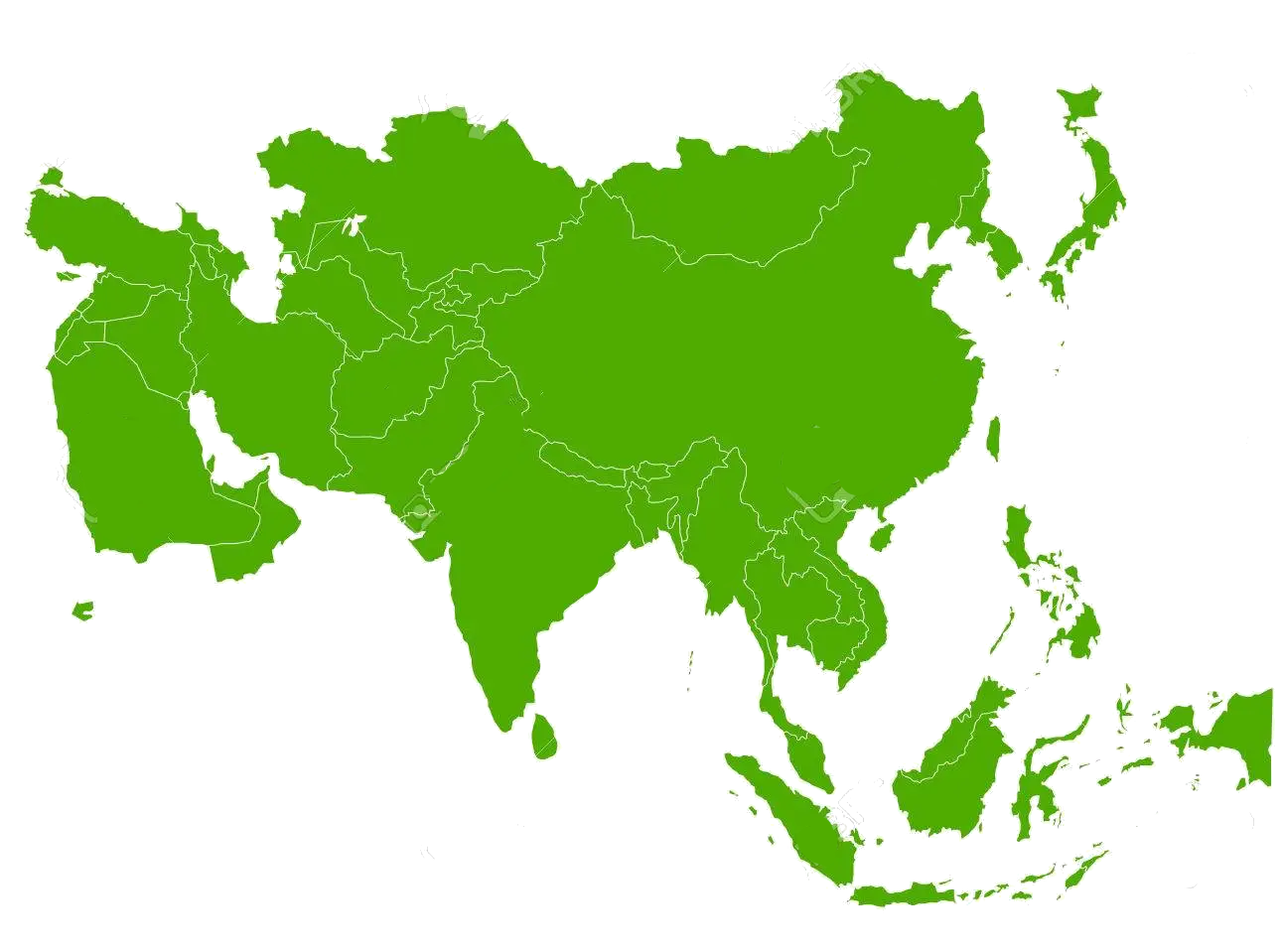 States of Asia
States of Asia

日本国(日语:日本国/にっぽんこく、にほんこく Nippon-koku, Nihon-koku */?),通称日本,是位于东亚的岛屿国家,由日本列岛、琉球群岛和伊豆-小笠原群岛等6,852个岛屿组成[10],面积约37.8万平方公里[11]。国土全境被太平洋及鄂霍次克海、日本海、东海等缘海环抱,西邻朝鲜半岛及俄属远东,东北接千岛群岛,西南面台湾及中国大陆东部。人口达1.26亿[6],居于世界各国第11位,当中逾3,500万人居住于首都东京及周边数县构成的首都圈,为世界最大的都市圈[12]。政体施行议会制君主立宪制,君主天皇为国家与国民的象征,实际的政治权力则由国会、以及内阁总理大臣(首相)所领导的内阁掌管[13]。
传说日本于公元前660年2月11日建国[14],在公元4世纪出现首个统一政权,并于大化改新中确立了天皇的中央集权体制,文化上则深受中国隋唐两代之影响。12世纪后的六百年间,日本由幕府等数个武士阶级政权实际统治,期间包括了政治纷乱的南北朝与战国时代。17世纪起江户幕府颁布锁国令,至1854年被黑船迫以开港才结束。此后,日本在西方列强进逼的时局下,首先天皇从幕府手中收回政治实权,接着在19世纪中期的明治维新进行大规模政治与经济改革,引入欧洲的科学与技艺,日本的社会于是实现了工业化及现代化,施行天皇专权的君主立宪制,将北海道正式纳为领土;而自19世纪末起,日本开始进行对外扩张,首先并吞琉球,之后将台湾、朝鲜、库页岛等地纳为殖民地。进入20世纪时,日本已成为当时各国承认的帝国主义列强之一,也是当时东方世界唯一的大国。日本后来成为第二次世界大战的轴心国之一,但最终于1945年投降。败战后,日本在盟军主导下转型为以国会为中心的民主政体,天皇地位虚位化[13],同时依据新宪法放弃发动战争的权利,仅维持防御性的武装力量。
日本是世界第三大经济体,亦为七国集团成员,是世界先进国家之一,主要奠基于日本经济在二战后的巨幅增长。现时日本的科研能力、工业基础和制造业技术均位居世界前茅[15],并是世界第4大出口国和进口国[16]。2018年,日本的人均国内生产总值依国际汇率可兑换成为四万零八百美元,人均国民收入则在四万四千四百美元左右,人类发展指数亦在最高组群行列[17]。
Japan (japanisch 日本, ausgesprochen als Nihon oder Nippon; ) ist ein 6852 Inseln umfassender ostasiatischer Staat im Pazifik, der indirekt im Norden und Nordwesten an Russland, im Westen an Nord- und Südkorea und im Südwesten an Taiwan und China grenzt und flächenmäßig der viertgrößte Inselstaat der Welt ist. De-facto-Hauptstadt und größte urbane Siedlung ist Tokio.
Die Bildung des japanischen Staatswesens begann im 5. Jahrhundert unter kulturellem Einfluss des chinesischen Kaiserreichs. Seit dem 16. Jahrhundert stand Japan im Kontakt mit dem Westen und stieg seit dem 19. Jahrhundert zur Großmacht auf, erwarb Kolonien wie Korea und Taiwan, nahm an beiden Weltkriegen teil und beherrschte kurzzeitig große Teile Südost- und Ostasiens. Das Japanische Kaiserreich war bis 1947 eine nach dem monarchischen Prinzip ausgerichtete, zum Teil an preußischem Vorbild angelehnte, konstitutionelle Monarchie mit dem japanischen Kaiser als Staatsoberhaupt. Seine aggressive Expansionspolitik in China im Vorfeld und während des Zweiten Weltkrieges (Pazifikkrieg) führte schließlich zur Niederlage an der Seite der Achsenmächte im August 1945. Im unter Douglas MacArthurs Besatzungsregierung gestalteten japanischen Staat seit 1947 ist der Souverän das Volk, höchstes Organ der Staatsgewalt das Parlament, dessen Kammern seither beide direkt vom Volk gewählt werden. Das Kaisertum wurde nicht abgeschafft, aber der Kaiser als „Symbol des Staates“ auf zeremonielle Aufgaben ohne eigenständige Autorität in Staatsangelegenheiten reduziert. Außer Japan gibt es keinen Staat mehr mit einem Kaiser.
Japan wird zu den dichter besiedelten Ländern Asiens gezählt und liegt mit ca. 126 Millionen Einwohnern auf Platz elf der bevölkerungsreichsten Länder der Erde. Die japanische Bevölkerung konzentriert sich überwiegend auf die vier Hauptinseln und besteht zu 99 % aus Japanern. Zu den Minderheiten gehören Koreaner, Chinesen, Filipinos und Taiwaner. Seit den 2000er Jahren leben in Japan auch mehrere Tausend Gastarbeiter und Asylbewerber aus Afrika und anderen asiatischen Ländern. Die meisten Einwohner sind Anhänger des Shintoismus und Buddhismus.
Als historisch erste Industrienation Asiens hat Japan heute eine sehr hoch entwickelte Volkswirtschaft und war viele Jahre lang die weltweit zweitgrößte Wirtschaftskraft hinter den Vereinigten Staaten, mit denen es militärisch seit 1952 verbündet ist. Japan ist Mitglied der Gruppe der Sieben größten Industrienationen der Welt und der OECD. Japan nimmt in der Rangfolge gemäß dem Index der menschlichen Entwicklung der Vereinten Nationen den 19. Platz der 188 vom Index berücksichtigten Mitgliedstaaten der Vereinten Nationen ein.
日本では、大和政権が統一以降に自国を「ヤマト」と称していたようであるが、古くから中国や朝鮮は日本を「倭」と呼んできた。石上神宮の七支刀の銘や、中国の歴史書(『前漢書』『三国志』『後漢書』『宋書』『隋書』など)や、高句麗の広開土王の碑文も、すべて倭、倭国、倭人、倭王、倭賊などと記している。そこで大和の代表者も、外交時には(5世紀の「倭の五王」のように)国書に「倭国王」と記すようになった[46]。
しかし中国との国交が約120年に渡って中絶した後、7世紀初期に再開された時には、『日本書紀』では「東の天皇が敬いて西の皇帝に白す」、『隋書』には「日出ずる処の天子、書を日没する処の天子に致す。恙無しや」とする国書を日本側が渡した記述があり、従来のように倭と称する事を避けている。中国側では『旧唐書』の「東夷伝」に初めて日本の名称が登場し、「日本国は倭国の別種なり。其の国、日の辺に在るを以ての故に、日本を以て名と為す」「或いは曰く、倭国自ら其の名の雅ならざるを悪(にく)み、改めて日本と為す」「或いは曰く、日本は旧(もと)小国、倭国の地を併す」のように、倭が名称を日本に変えた理由を説明している[47]。また、『新唐書』においては「国日出ずる所に近し、以に名をなす」とあり、隋書の「日出処天子」と共通している。
この7世紀には、遣隋使に続いて遣唐使がしばしば派遣されているが、いつから「倭」に変えて「日本」を国号と変えたのかは明らかでない[48]。使者の毎回の交渉について詳しく記述している『日本書紀』も、8世紀に国号としての日本が確立した後の書物であり、原資料にあった可能性のある「倭」の字を、国号に関する限りすべて「日本」と改めている。それ以外の文献では、733年(天平5年)に書かれた『海外国記』の逸文で、664年(天智3年)に太宰府へ来た唐の使者に「日本鎮西筑紫大将軍牒」とある書を与えたというが、真偽は不明である。結局確かなのは『続日本紀』における記述であり、702年(大宝2年)に32年ぶりで唐を訪れた遣唐使は、唐側が「大倭国」の使者として扱ったのに対し、「日本国使」と主張したという。『旧唐書』の「東夷伝」の記事も、この日本側の説明に基づいているようである[49]。
Japan (Japanese: 日本; Nippon [ɲippoɴ] or Nihon [ɲihoɴ]; formally 日本国 ![]() Nippon-koku or Nihon-koku, lit. "State of Japan") is an island country in East Asia. Located in the Pacific Ocean, it lies off the eastern coast of the Asian continent and stretches from the Sea of Okhotsk in the north to the East China Sea and the Philippine Sea in the south.
Nippon-koku or Nihon-koku, lit. "State of Japan") is an island country in East Asia. Located in the Pacific Ocean, it lies off the eastern coast of the Asian continent and stretches from the Sea of Okhotsk in the north to the East China Sea and the Philippine Sea in the south.
The kanji that make up Japan's name mean "sun origin", and it is often called the "Land of the Rising Sun". Japan is a stratovolcanic archipelago consisting of about 6,852 islands. The four largest are Honshu, Hokkaido, Kyushu, and Shikoku, which make up about ninety-seven percent of Japan's land area and often are referred to as home islands. The country is divided into 47 prefectures in eight regions, with Hokkaido being the northernmost prefecture and Okinawa being the southernmost one. The population of 127 million is the world's tenth largest, of which 98.5% are ethnic Japanese. 90.7% of people live in cities, while 9.3% live in the countryside.[16] About 13.8 million people live in Tokyo,[17] the capital of Japan. The Greater Tokyo Area is the most populous metropolitan area in the world with over 38 million people.[18]
Archaeological research indicates that Japan was inhabited as early as the Upper Paleolithic period. The first written mention of Japan is in Chinese history texts from the 1st century AD. Influence from other regions, mainly China, followed by periods of isolation, particularly from Western Europe, has characterized Japan's history.
From the 12th century until 1868, Japan was ruled by successive feudal military shōguns who ruled in the name of the Emperor. Japan entered into a long period of isolation in the early 17th century, which was ended in 1853 when a United States fleet pressured Japan to open to the West. After nearly two decades of internal conflict and insurrection, the Imperial Court regained its political power in 1868 through the help of several clans from Chōshū and Satsuma – and the Empire of Japan was established. In the late 19th and early 20th centuries, victories in the First Sino-Japanese War, the Russo-Japanese War and World War I allowed Japan to expand its empire during a period of increasing militarism. The Second Sino-Japanese War of 1937 expanded into part of World War II in 1941, which came to an end in 1945 following the Japanese surrender. Since adopting its revised constitution on May 3, 1947, during the occupation led by SCAP, the sovereign state of Japan has maintained a unitary parliamentary constitutional monarchy with an Emperor and an elected legislature called the National Diet.
Japan is a member of the ASEAN Plus mechanism, UN, the OECD, the G7, the G8, and the G20, and is considered a great power.[19][20][21] Its economy is the world's third-largest by nominal GDP and the fourth-largest by purchasing power parity. It is also the world's fourth-largest exporter and fourth-largest importer.
Japan benefits from a highly skilled and educated workforce; it has among the world's largest proportion of citizens holding a tertiary education degree.[22] Although it has officially renounced its right to declare war, Japan maintains a modern military with the world's eighth-largest military budget,[23] used for self-defense and peacekeeping roles; it ranked as the world's fourth most-powerful military in 2015.[24] Japan is a highly developed country with a very high standard of living and Human Development Index. Its population enjoys the highest life expectancy and third lowest infant mortality rate in the world, but is experiencing issues due to an aging population and low birthrate. Japan is renowned for its historical and extensive cinema, influential music industry, anime, video gaming, rich cuisine and its major contributions to science and modern technology.[25][26]
Le Japon, en forme longue l’État du Japon, en japonais Nihon ou Nippon (日本) et Nihon-koku ou Nippon-koku (日本国) respectivement, est un pays insulaire de l’Asie de l’Est, situé entre l’océan Pacifique et la mer du Japon, à l’est de la Chine, de la Corée et de la Russie, et au nord de Taïwan. Étymologiquement, les kanjis (caractères chinois) qui composent le nom du Japon signifient « pays (国, kuni) d’origine (本, hon) du Soleil (日, ni) » ; c’est ainsi que le Japon est désigné comme le « pays du soleil levant ».
Le Japon forme, depuis 1945, un archipel de 6 852 îles de plus de 100 m2, dont les quatre plus grandes sont Hokkaidō, Honshū, Shikoku, et Kyūshū représentant à elles seules 95 % de la superficie terrestre du pays. L’archipel s’étend sur plus de trois mille kilomètres. La plupart des îles sont montagneuses, parfois volcaniques ; par exemple, le plus haut sommet du Japon, le mont Fuji (3 776 m), est un volcan (inactif depuis 1707). Le Japon est le douzième pays le plus peuplé du monde, avec environ 127 millions d’habitants pour 377 488 km2 (337 hab./km2), dont l'essentiel est concentré sur les étroites plaines littorales du sud d'Honshū et du nord de Shikoku et Kyūshū, formant un ensemble pratiquement urbanisé en continu appelé « Mégalopole japonaise » ou « Taiheiyō Belt » (太平洋ベルト, Taiheiyō beruto, littéralement « ceinture Pacifique »). Le Grand Tokyo, qui comprend la capitale Tokyo et plusieurs préfectures environnantes, est la plus grande région métropolitaine du monde, avec plus de 35 millions d’habitants. La ville a été première place financière mondiale en 1990.
Les recherches archéologiques démontrent que le Japon était peuplé dès la période du Paléolithique supérieur. Les premières mentions écrites du Japon sont de brèves apparitions dans des textes de l’histoire chinoise du Ier siècle. L’histoire du Japon est caractérisée par des périodes de grande influence dans le monde extérieur suivies par de longues périodes d’isolement. Depuis l’adoption de sa constitution en 1947, le Japon a maintenu une monarchie constitutionnelle avec un empereur et un parlement élu, la Diète.
Le Japon est la troisième puissance économique du monde pour le PIB nominal et la quatrième pour le PIB à parité de pouvoir d’achat. Il est aussi le quatrième pays exportateur et le sixième pays importateur au monde. Acteur majeur du commerce international et puissance épargnante, il a ainsi accumulé une position créancière nette vis-a-vis du reste du monde (en) de plus de 325 000 milliards de yens4, le plaçant en première position devant la Chine5. C’est un pays développé, avec un niveau de vie très élevé (dix-septième IDH le plus élevé) et la plus longue espérance de vie au monde selon les estimations de l’ONU6. Mais ce tableau idyllique ne doit pas masquer d’importants problèmes qui pèsent sur l’avenir du pays : le Japon souffre d’un des taux de natalité les plus bas du monde, très en dessous du seuil de renouvellement des générations7. Le pays est actuellement en déclin démographique8. C’est également le pays pour lequel le poids de la dette publique brute est le plus important au monde9, cette dernière s’élève en 2014 à 233 % du PIB10.
Il Giappone (AFI: [ʤapˈpoːne][6][7]; in giapponese 日本 Nihon? o Nippon?, ufficialmente 日本国 Nihon-koku? o Nippon-koku?) è uno Stato insulare dell'Asia orientale.
Situato nell'oceano Pacifico, il Giappone si trova a est del mar del Giappone, Cina, Corea del Nord, Corea del Sud e Russia. Si sviluppa nell'area compresa tra il mare di Ochotsk nel nord, fino al mar Cinese Orientale e Taiwan nel sud. Il Giappone è un arcipelago composto da 6.852 isole, le cui quattro isole più grandi sono: Honshū, Hokkaidō, Kyūshū e Shikoku (tutte e quattro collegate tramite ponti o tunnel sottomarini), che da sole rappresentano circa il 97% della superficie terrestre del Giappone. Molte isole sono montagne, alcune di origine vulcanica e la vetta più alta del Giappone è il Monte Fuji, un vulcano attivo.[8]
Con una popolazione di circa 127 milioni di abitanti è il decimo Stato più popoloso del mondo. La Grande Area di Tokyo, che include Tokyo e numerose prefetture vicine, è di fatto la più grande area metropolitana del mondo con oltre 30 milioni di residenti. Ricerche archeologiche indicano che l'arcipelago è abitato dal Paleolitico superiore. La prima menzione scritta sul Giappone si ha con una breve apparizione in un libro di storia cinese del primo secolo a.C. Alle influenze provenienti dal mondo esterno seguì un lungo periodo di isolamento che caratterizzò profondamente la storia del Giappone. Fin dall'adozione dell'odierna Costituzione il Giappone mantiene una monarchia parlamentare con un imperatore e un parlamento eletto noto come Dieta, rendendolo di fatto l'ultimo impero rimasto nel mondo.
Grande potenza regionale asiatica,[9][10] il Giappone ha la terza maggiore economia per prodotto interno lordo e la quarta maggiore per potere d'acquisto, è anche il quarto maggiore esportatore e il sesto maggiore importatore a livello mondiale. Il Giappone è inoltre uno Stato membro del G8 e del G7 ed è un membro non permanente del consiglio di sicurezza delle Nazioni Unite. Lo Stato ha un moderno apparato militare utilizzato per l'autodifesa, per missioni di pace e per aiutare gli alleati all'estero nel rispetto della Costituzione. Il Giappone è uno Stato sviluppato con una qualità di vita molto elevata (ventesimo a livello mondiale). I cittadini giapponesi hanno inoltre la maggiore aspettativa di vita al mondo e il tasso di mortalità infantile è il secondo più basso dietro al Principato di Monaco.[11][12]
Japón (en japonés: 日本, Nihon o Nippon), oficialmente Estado del Japón (日本国, ![]() Nihon-koku (?·i) o Nippon-koku), es un país soberano insular del este de Asia. Situado en el océano Pacífico; tiene al oeste el mar del Japón, China, Corea del Norte, Corea del Sur y Rusia, al norte el mar de Ojotsk y al este y sur el mar de China Oriental y Taiwán. Los caracteres que componen el nombre de Japón pueden significar «el origen del sol» o «la base del sol», motivo por el que el país también es conocido como la Tierra del Sol Naciente, ya que desde la perspectiva de China, el sol sale desde Japón.
Nihon-koku (?·i) o Nippon-koku), es un país soberano insular del este de Asia. Situado en el océano Pacífico; tiene al oeste el mar del Japón, China, Corea del Norte, Corea del Sur y Rusia, al norte el mar de Ojotsk y al este y sur el mar de China Oriental y Taiwán. Los caracteres que componen el nombre de Japón pueden significar «el origen del sol» o «la base del sol», motivo por el que el país también es conocido como la Tierra del Sol Naciente, ya que desde la perspectiva de China, el sol sale desde Japón.
Japón es un archipiélago compuesto por 6852 islas. El Área del Gran Tokio en la isla de Honshū, donde está la ciudad de Tokio, capital de facto de la nación, es la mayor área metropolitana del mundo, con más de treinta millones de residentes. Y a su vez, Tokio, la capital, es la ciudad más grande del mundo en cuanto a extensión.
Los restos arqueológicos indican que el ser humano ha vivido en Japón desde el Paleolítico superior. La primera mención escrita de las islas se encuentra en textos de la antigua China del siglo I d. C. La historia de Japón ha alternado periodos de influencia extranjera con otros muy prolongados de aislamiento total. Desde el siglo XII hasta 1868 Japón estuvo gobernado por sucesivos shogunatos militares que ejercían el poder en nombre del emperador. En el siglo XVII el país entró en un largo periodo de aislamiento que no terminó hasta mediados del siglo XIX. Después de casi dos décadas de conflictos internos e insurrecciones se restauró al emperador Meiji como jefe del Estado en 1868 y se proclamó el Imperio del Japón.
A finales del siglo XIX y principios del XX, los éxitos en la Primera guerra sino-japonesa, en la guerra ruso-japonesa y en la Primera Guerra Mundial permitieron a Japón expandir su imperio y fortalecer sus fuerzas armadas. La Segunda guerra sino-japonesa que se inició en 1937, acabó formando parte de la Segunda Guerra Mundial desde 1941, conflictos que terminaron tras la rendición de Japón debido a los bombardeos atómicos sobre Hiroshima y Nagasaki en 1945. Desde la adopción de la constitución revisada en 1947, Japón ha mantenido una monarquía constitucional unitaria con un emperador y un órgano de gobierno democrático llamado Dieta.
Japón es desde hace varias décadas, una de las grandes potencias económicas mundiales8 y en la actualidad es la tercera mayor economía de acuerdo a su PIB. Asimismo, es el cuarto mayor exportador e importador de mercancías. Aunque Japón renunció oficialmente a su derecho a declarar la guerra tras la Segunda Guerra Mundial, posee unas modernas fuerzas armadas y el quinto mayor presupuesto militar mundial9 para su autodefensa y el mantenimiento de la paz.
Es miembro de la Organización de las Naciones Unidas, el G7, el G4 y la APEC. Japón es el segundo país con la menor tasa de homicidios, solo por detrás de Singapur,10 las mujeres japonesas tienen la segunda mayor esperanza de vida11 y, según la ONU, el país presenta la tercera menor mortalidad infantil del mundo.1213
Япо́ния (яп. 日本 Нихон, Ниппон, букв. «место, где восходит Солнце»[8]), официальное название «Нихон коку», «Ниппон коку» (яп. 日本国) — островное государство в Восточной Азии. Находится в Тихом океане к востоку от Японского моря, Китая, Северной и Южной Кореи, России. Занимает территорию от Охотского моря на севере до Восточно-Китайского моря и Тайваня на юге. Поэтическое название — Страна восходящего солнца.
Расположена на Японском архипелаге, состоящем из 6852 островов[прим 2][9]. Четыре крупнейших острова — Хонсю, Хоккайдо, Кюсю и Сикоку — составляют 97 % общей площади архипелага. Большинство островов горные, многие вулканические. Высшая точка Японии — вулкан Фудзияма (3776 м). С населением более 126 миллионов человек, Япония занимает десятое место в мире. Большой Токио, включающий в себя столицу Японии Токио и несколько близлежащих префектур, с населением более 30 миллионов человек является крупнейшей городской агломерацией в мире.
По форме государственного устройства Япония — децентрализованное унитарное государство, по форме государственного режима — демократическое государство.[10]
Являясь великой экономической державой[11], Япония занимает третье место в мире по номинальному ВВП и четвёртое по ВВП, рассчитанному по паритету покупательной способности. Япония является четвёртым по величине экспортёром и шестым по величине импортёром.
Япония — развитая страна с очень высоким уровнем жизни (семнадцатое место по индексу развития человеческого потенциала). В Японии одна из самых высоких ожидаемых продолжительностей жизни (в 2009 году она составила 82,12 года[12]) и один из самых низких уровней младенческой смертности[13].
Япония входит в число стран — членов «Большой семёрки» и АТЭС, а также регулярно избирается непостоянным членом Совета Безопасности ООН. Япония официально отказалась от своего права объявлять войну, но она имеет силы самообороны, которые используются также и в миротворческих операциях.
Япония является единственной страной в мире, против которой было применено ядерное оружие.
Император Японии — Акихито (с 1989 года), премьер-министр Японии — Синдзо Абэ (с 2012 года), председатель Либерально-демократической партии Японии.
 Javier Milei
Javier Milei

 Party and government
Party and government
 Group of the twenty most important industrial and emerging countries
Group of the twenty most important industrial and emerging countries

 Party and government
Party and government
 President or Chairman
President or Chairman
 Argentinien
Argentinien
 President or Chairman
President or Chairman

 *Democratic Party
*Democratic Party
 Joe Biden
Joe Biden

 Party and government
Party and government
 Group of Seven,G7
Group of Seven,G7

 Party and government
Party and government
 *President or Chairman
*President or Chairman

 Party and government
Party and government
 Group of the twenty most important industrial and emerging countries
Group of the twenty most important industrial and emerging countries

 Economy and trade
Economy and trade